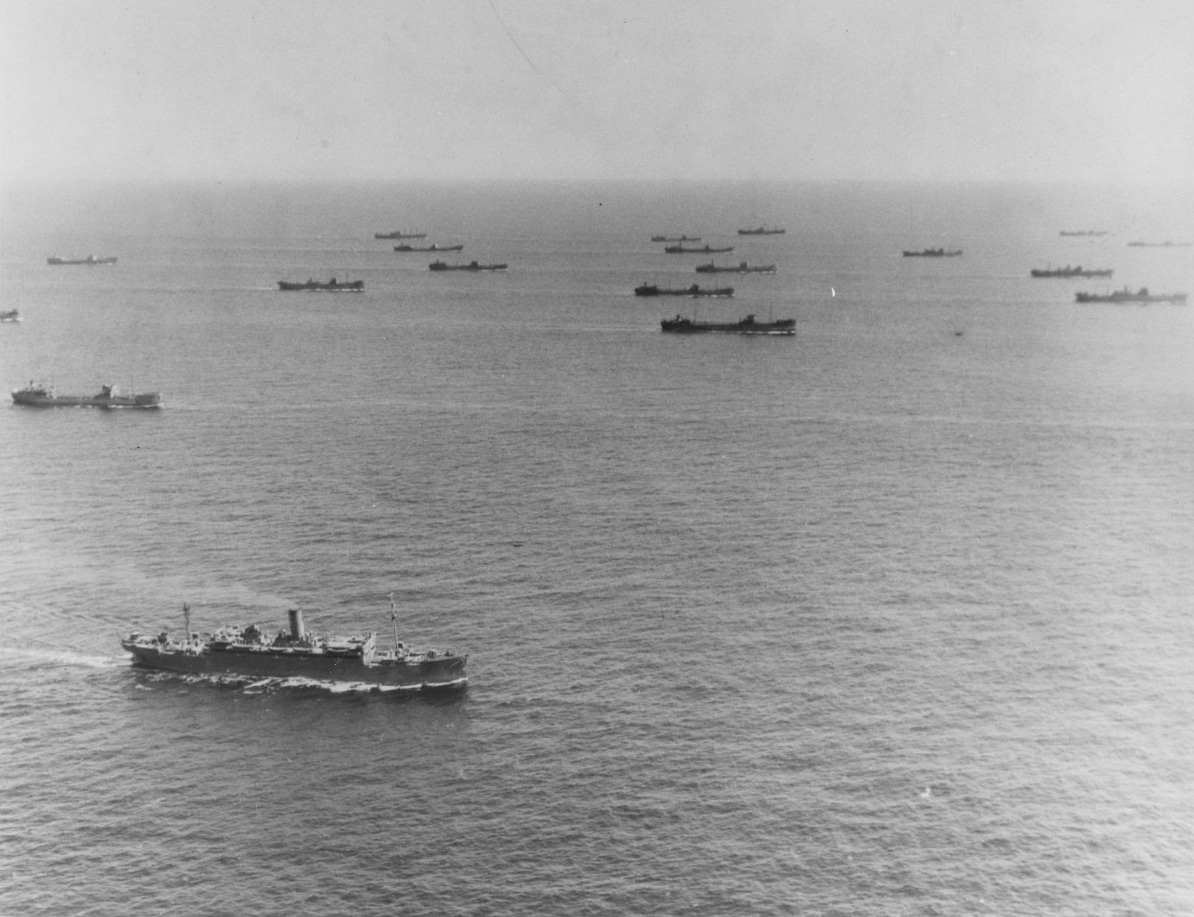Statistical Thinking 2:
Safety in Numbers – Calculating Probabilities for Convoys
Early 1942 was a critical period for the Allies in WWII. Russia was on its heels, with German armies at the gates of Moscow and preparing an offensive in southern Russia. Alone among the Allies in its ability to inflict major casualties on Germany, Russia depended in part on Atlantic/Arctic convoys for supplies. Without resupply by Britain and the U.S., Russia would probably have lost the war, and, had Russia dropped out, the outcome in Western Europe might have been very different. In a similar way, the UK depended critically on U.S. supplies shipped via Atlantic convoys. Astute assessment of the probabilities involved in convoy operations helped ensure that the lifelines to Russia and the UK continued to deliver vital food, material and weapons.
The Convoy Advantage
The two key advantages of a convoy are (1) the consolidation of shipping that allows scarce escort ships to be deployed for protection, and (2) the lower overall probability of being sighted by submarines, compared to an equivalent number of ships sailing independently. The probability of being sighted was about 2/3 for a convoy of 50 ships. For a single ship sailing independently, it was lower, perhaps about 1/4. However, the possibility of at least one sighting among the 50 independent ships is over 99%. (It is the complement of the probability that all 50 ships will sail unsighted, which is very low – much less than 1%.)
Of course, the convoy presents a bigger target, so losses will be bigger than in the case of a single ship. In 1941 on the North Atlantic, 50-ship convoys lost 5 ships on average, when attacked. (We assume certain loss if a single ship is sighted.) This yields the following calculation of expected loss:
Expected Number of Ships Lost, Convoy vs. Independent
50-ship convoy, 0.67 probability of sighting, 5-ship loss if sighted: 3.35 ships
50 ships sailing independently, each with 0.25 probability of sighting/loss: 12.5 ships
(These figures are simplifications derived from the 1946 statistical survey, OEG REPORT No. 51, Antisubmarine Warfare in World War II, by Charles M. Sternhell and Alan M. Thorndike, Operations Evaluation Group, Office of the Chief of Naval Operations, Navy Department.)
Escorts
Convoys typically traveled with armed escort ships that defended against attacking submarines and reduced losses (the data above are for convoys with escorts). Escort capabilities differed depending on where the convoy was located. In ocean space close to North America or Britain, aircraft could be used to provide effective cover. Further out in the Atlantic, escorts consisted of navy ships that could be spared for convoy duty; they were not always the newest or most capable. Escort ships were always in short supply and their availability, in effect, determined the level of convoy operations. Their deployment to convoy protection could wax and wane with the demands of defensive and offensive operations elsewhere in the war.
Origin of Convoys
Trans-Atlantic convoys with escorts were used toward the end of the First World War. Initially, the British Admiralty was hostile to the idea, figuring that convoys would present too big a target and would magnify losses if discovered. In 1917 they warmed to the idea but started out with a one escort ship for each merchant ship.
In WWII, the ratio of escorts to merchant ships dropped as shipping expanded and escort vessels proved hard to obtain. Convoy size eventually reached over 60 merchant ships, with escorts making up less than 12% of the total. What drove this constant increase in convoy size was not just the shortage of escort ships.
Even had there not been a shortage of escorts, a close analysis of the data would have dictated larger convoys, owing to the “probability of detection” effect described above. Examining the statistics of operations revealed that the “kill rate” for each U-boat encountering a convoy was roughly the same, regardless of convoy size:
|
Size of convoy |
Ships sunk per U-boat attacking |
|
0-14 |
1.8 |
|
15-24 |
0.7 |
|
25-34 |
1.1 |
|
35-44 |
1.1 |
|
45-54 |
0.9 |
|
55 and over |
1.2 |
Countervailing Effects
The bigger target afforded by a convoy (which raised the chance of detection) and the number of ships in the same area (which raised the expected loss from an attack), both offset the “lower detection” advantage enjoyed by convoys. So did German “wolf pack” tactics, in which submarines attacked in groups (though in this case, the more effective attacks on shipping came at the cost of using more subs). One other significant convoy disadvantage was speed, which had two dimensions:
- Average convoy speed was lower than average independent vessel speed, as convoys could travel no faster than their slowest member.
- Convoy ships spent more time in port than independents, as they waited for all the elements of a convoy to assemble and be ready.
Nonetheless, the net effect of convoying was strongly positive. In the mid-Atlantic region, convoys lost only 4% of their tonnage, compared to 20% by independent ships.
Conclusion
The final word comes from Winston Churchill, a betting man. He said the Germans mis-calculated the probability of success in the Battle of the Atlantic:
“The U-boat attack was our worst evil. It would have been wise for the Germans to stake all upon it.”
